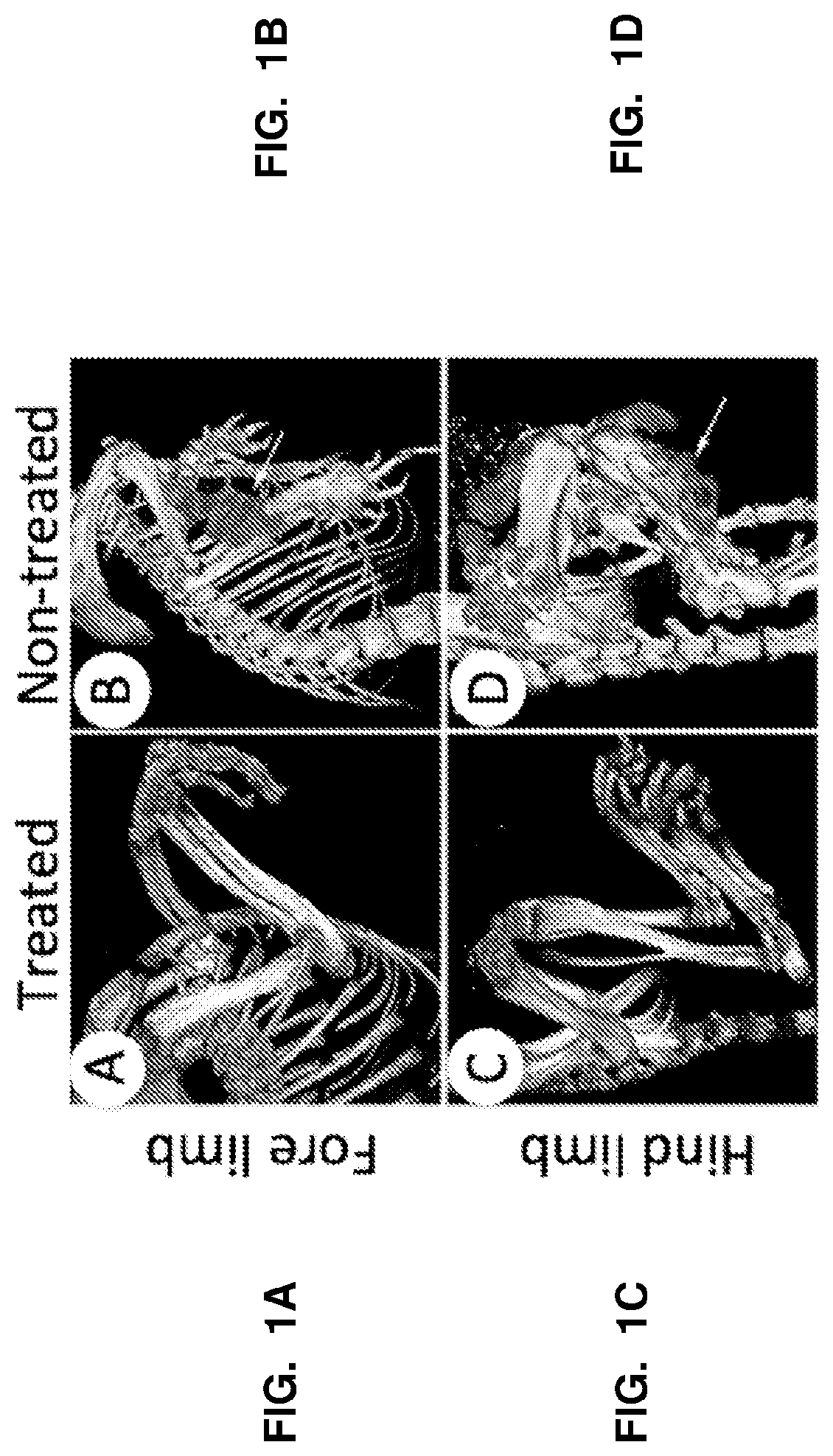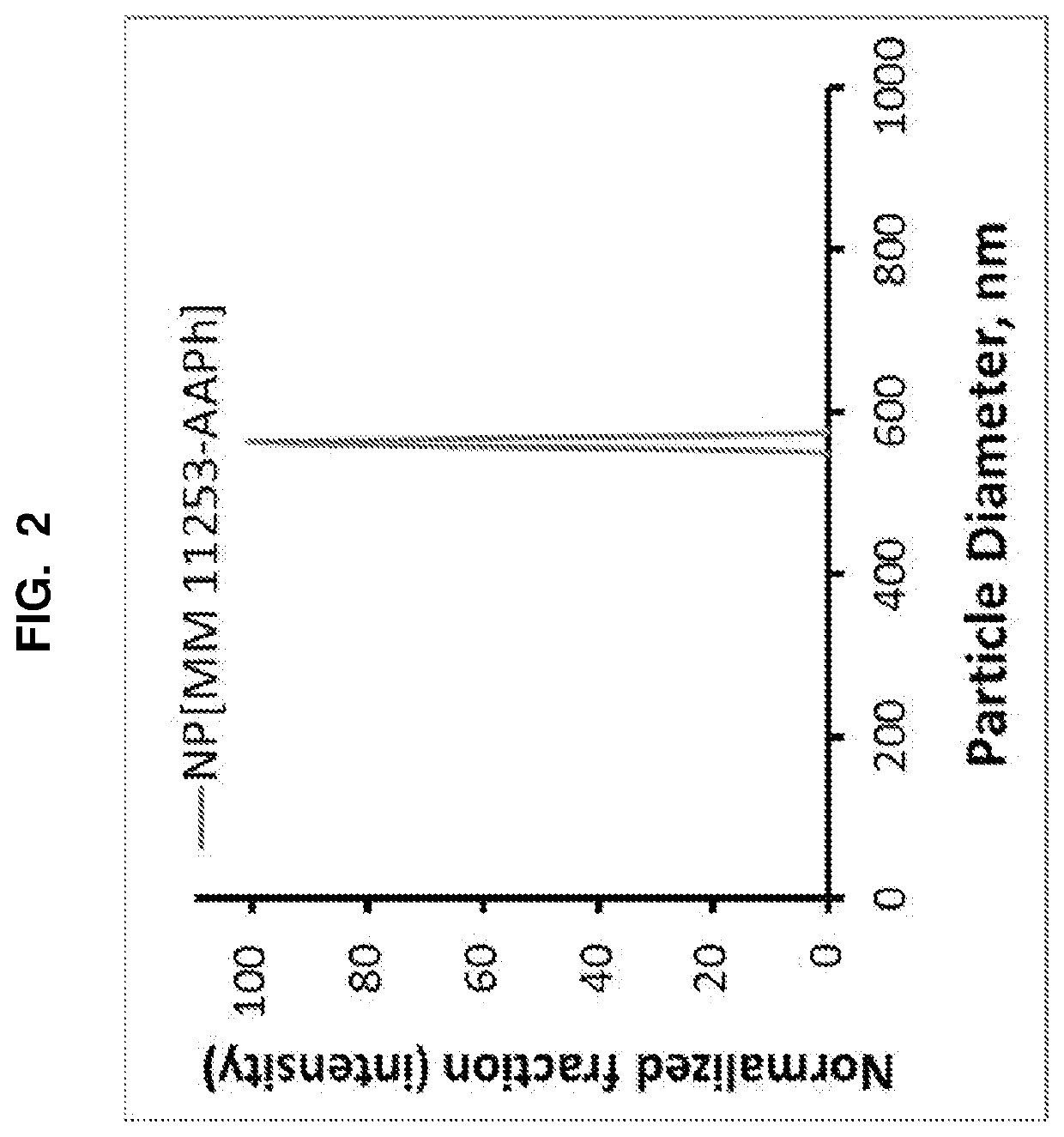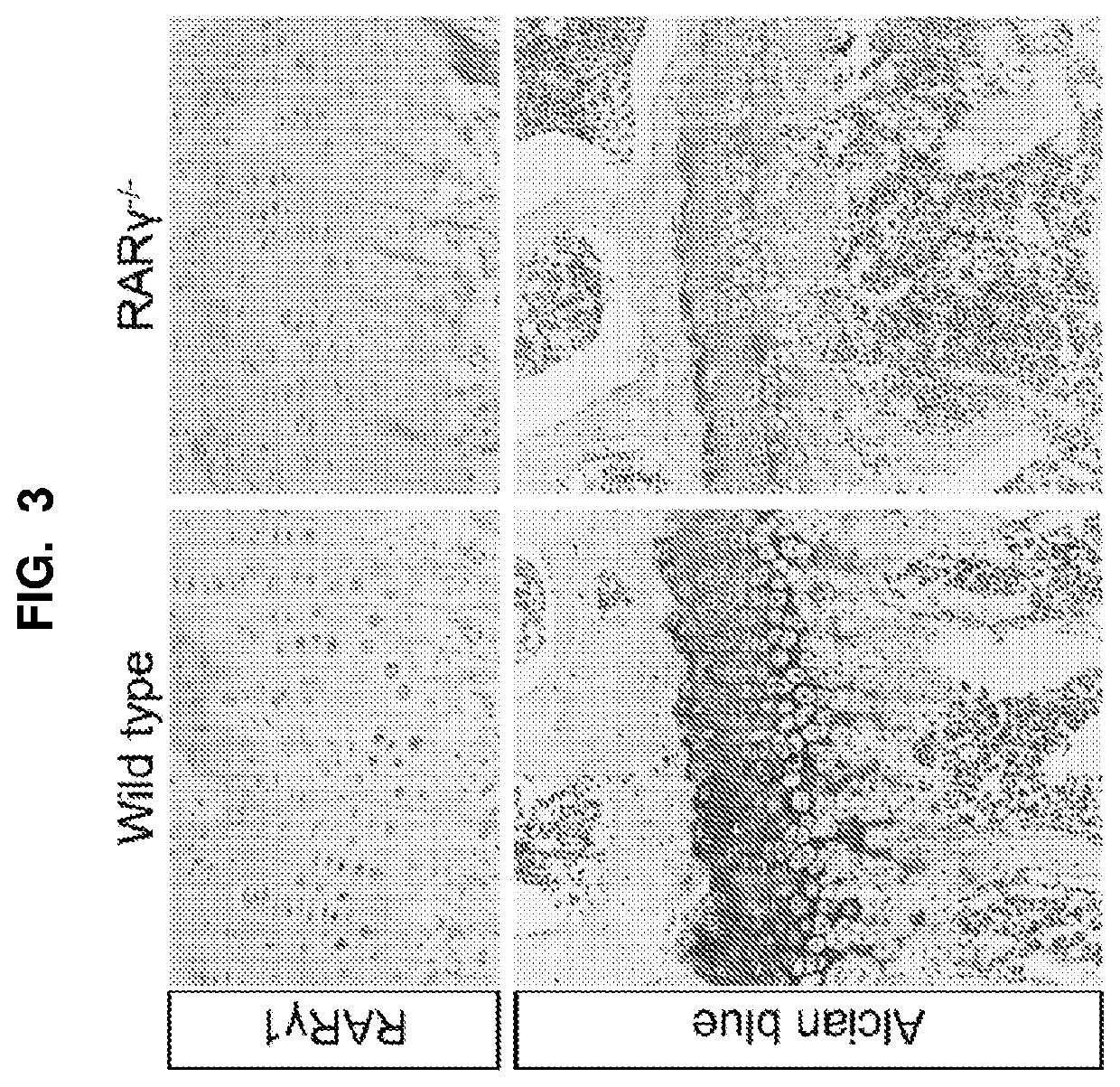Selective RARy Ligand-loaded nanoparticles for manipulation of targeted bone growth
a nanoparticle and targeted bone technology, applied in the field of medicine, can solve the problems of delayed fracture repair, chondrodysplasia, dwarfism, growth imbalance, etc., and achieve the effect of reducing drug dissemination, reducing drug dissemination, and highly site-specifi
- Summary
- Abstract
- Description
- Claims
- Application Information
AI Technical Summary
Benefits of technology
Problems solved by technology
Method used
Image
Examples
example 1
and Methods
[0136]A. Nanoparticle Production
[0137]An aqueous dispersion of nanoparticles (NP) was prepared using a modification of the emulsification-solvent evaporation method. Fifteen mg of the drug were first dissolved in a mixture of 1 mL ethanol and 7 mL chloroform, followed by 200 mg of poly(D,L-lactide) (MW=35 kDa, Mn=19 kDa). The organic solution was emulsified by sonication on ice in 10 mL of a 0.2 μm filter-sterilized aqueous phase consisting of 100 mg of human serum albumin dissolved in deionized water. The obtained emulsion was transferred into a round-bottom evaporation flask, and the organic solvent was removed using a rotary evaporator at 30° C. under pressure gradually reduced from 200 to 40 mbar. Following the solvent evaporation step, human serum albumin and glucose (200 mg and 400 mg, respectively) were dissolved in the particle suspension. The suspension was sequentially filtered through a 1.0-μL glass filter unit, then through a 5.0 μm sterile filter into a prest...
example 2
n of RARγ Prodrugs
[0158]
[0159]For conjugation of MM 11253 with acetaminophen, the following procedure was used. Under argon atmosphere, MM 11253 (Abcam Biochemicals™, Cambridge, Mass., 51 mg, 0.11 mmol), acetaminophen (Alfa Aesar™ , 98%, 34 mg, 0.22 mmol) and DPTS catalyst (55 mg, 0.19 mmol) in NMP (1.9 mL) were cooled in an ice-water bath, and EDC (65 mg, 0.34 mmol)) followed by CH2Cl2 (0.7 mL) were added. The mixture was stirred in the bath for 15 minutes, warmed to room temperature (becoming homogeneous) and further stirred for 22 hours. Aqueous 16% NaH2PO4.H2O (25 mL, acidified with phosphoric acid to pH 3) was added, the mixture was extracted with ethyl acetate (20 mL), the organic phase was washed with 5M aqueous NaCl (2×50 mL), with water (2×5 mL) and dried. The crude product was purified by flash chromatography (silica-gel, chloroform-acetonitrile, 100:0 to 10:1). Yield of conjugate: 57 mg (89%). 1H NMR (400 MHz, CDCl3) and TLC (silica-gel plate, chloroform-acetonitrile, 7:3...
example 3
n of RARγ in Long Bone
[0162]Using the transgenic mouse mutants for specific retinoic acid receptors (RARα, RARβ and RARγ) and selective RAR agonists and antagonists, it was demonstrated that RARγ is the dominant receptor in GP among three RARs, and chondrocytes are the only cell type that expresses detectable amount of RARγ in long bone. See FIG. 3, which shows a set of longitudinal 6 μm sections of tibias from 5-week-old wild type or RARγ null mice, stained with anti-RARγ antibody. RARγ is shown in growth plate. Selective RARγ agonists also induce expression of numerous matrix metalloproteases and mineralization related genes.
PUM
| Property | Measurement | Unit |
|---|---|---|
| pressure | aaaaa | aaaaa |
| concentration | aaaaa | aaaaa |
| diameter | aaaaa | aaaaa |
Abstract
Description
Claims
Application Information
 Login to View More
Login to View More - R&D
- Intellectual Property
- Life Sciences
- Materials
- Tech Scout
- Unparalleled Data Quality
- Higher Quality Content
- 60% Fewer Hallucinations
Browse by: Latest US Patents, China's latest patents, Technical Efficacy Thesaurus, Application Domain, Technology Topic, Popular Technical Reports.
© 2025 PatSnap. All rights reserved.Legal|Privacy policy|Modern Slavery Act Transparency Statement|Sitemap|About US| Contact US: help@patsnap.com



